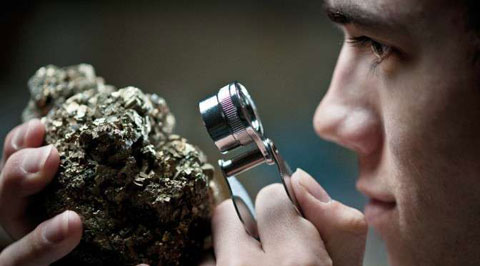Recherchez sur le site !
Recherche avancée / SpécifiqueCatégories publications
+ Sciences De La Terre - Archéologie - Astronomie - Spéléologie - Ecologie - Pédologie - Volcanologie - L'hydrogéologie - Géomorphologie - Minéralogie - Pétrologie - Paléontologie - Géologie + Climatologie - Réchouffement climatique - Changement climatique + Plantes - Plantes Aromatiques - Plantes médicinales + Zoologie - Faunes + Botanique - Flors + Sciences humaines - Géo Eco Tourisme - L’anthropologie - L'Histoire - Démographie - Sociologie - Géographie - Patrimoine culturel
Géo éco tourisme inclusif

Géoparc et Recherche Scientifique
Le coins de l’étudiant



Blog Géoparc Jbel Bani
Rock Art and Archaeology in Ifran-n-Taska (Eastern Jebel Bani, Morocco): First Results of the Moroccan-Italian Research Project
by Ahmed SKOUNTI1, Daniela ZAMPETTI2, Naïma OULMAKKI1, Rosanna PONTI3, Alessandra BRAVIN3, Kamal TAJEDDINE4 & Mustapha NAMI5
The research project Archéologie et art rupestre du Bani Oriental is included in a bilateral convention between the National Institute of Archaeological 110 A. SKOUNTI ET AL.
Sciences and Heritage (INSAP, Morocco) and the Antiquities Department of the Sapienza University of Rome (Italy). The aims of the project are: — The study of rock art and of archaeological evidences (GPS surveys, test excavations, extensive excavations);
— An ethno-archaeological investigation on the local nomadic families;
— The collection and dating of archaeological and rock art samples.
The rock art site of Ifran-n-Taska is located on the Tafraout-n-Taska plateau (Eastern Jebel Bani), west of the Zagora village. The first mission (2009) was devoted to the extensive geo-archaeological survey of the plateau and of the rock art sites, and to the sampling of the rock paintings in Ifran-n-Taska. Archaeological Survey
THE SITES
In this region, an astonishing series of evidences attest to the continuity of human presence from the prehistoric times to the XXIst century. The settlements, the chipped stone, the funerary structures, the rock art (petroglyphs and paintings), the quarries like the one located in Lhayyara (northern side Jebel l Lemsemmer – southern Bani), where copper and malachite were mined, form a heritage worth being preserved for their importance in the reconstruction of the history of this region (fig. 1)*.
As to the rock art in this area, the Taghrart-n-Lguettara site, including both petroglyphs and tumuli, was already known (SIMONEAU 1977). This site is located close to the lower part of the track climbing on the Tafraout plateau, which rises above the Feïja.
This kind of association between petroglyphs and tumuli is well known in various Moroccan regions (Dra, Oukaïmeden, Yagour, etc.) and also in the central Saharan massifs (Algerian Atlas and Tassili, Libyan Messak). These funerary monuments constitute an important clue for the reconstruction of the past pastoral societies and for the interpretation of their symbolic sphere.
Another important rock art context, very rich in petroglyphs, was discovered on the Tafraout plateau in 1995 at the same time as the painted shelters of Ifran-n-Taska. The Lemjilej site (fig. 2) is composed of a concentration of
* Cf. figures at the end of the text (pp. 123-136). ROCK ART AND ARCHAEOLOGY IN IFRAN-N-TASKA 111 thirty-three quartzite decorated slabs. The petroglyphs, characterized by different stylistic traits, were executed in different periods (as attested by the patina) and with different engraving techniques. The vast majority of the subjects are represented by geometric motifs, but there are also zoomorphic subjects (antelopes, ostriches, dromedaries, oxen), anthropomorphic subjects (hunters, horsemen), sandals, Libyco-Berber inscriptions. The modern petroglyphs, with a very light patina, include a man riding a donkey, some Arabic inscriptions, a driver on his car and a hunting scene with a rifle.
Four out of the zoomorphic subjects are in Tazina style (figs. 3, 4) and could go back to the Middle-Final Neolithic, spanning from 4,000 to 2,000 BC (PICHLER & RODRIGUE 2003). Most of the drawings can be assigned to the so-called Libyco-Berber style lato sensu or to recent times.
A number of Islamic cemeteries are often associated with the tumuli (fig. 5). One of the most interesting contexts was found at the foot of the Afrou mountain, facing the shelters of Ifran-n-Taska. Here there are two small cemeteries, one possibly older than the other because of the worse state of preservation. Close to the older cemetery, a stone ring encloses a pit of approximately 40 cm deep. Lahcen Oukhayyi, the householder of the family inhabiting the plateau, explained us that this structure was a tumulus which represented the burial of Sidi Abderrahman, a saint whose burial was raped in 2003. This burial represents, like in other North-African countries, evidence of the integration of the old beliefs and the Islamic religion. It is interesting to notice the continuity of utilization of the funerary spaces for a very long period in history. The reduced size of the majority of the burials in these cemeteries shows that the nomadic families are characterized by a high infant mortality.
SOURCE WEB PAR ACADEMIA.EDU
Les tags en relation
Dictionnaire scientifique
Plus de 123.000 mots scientifiques
Les publications
Géo parc Jbel Bani

Circuits & excursions touristiques

cartothéques


Photothéques
Publications & éditions




